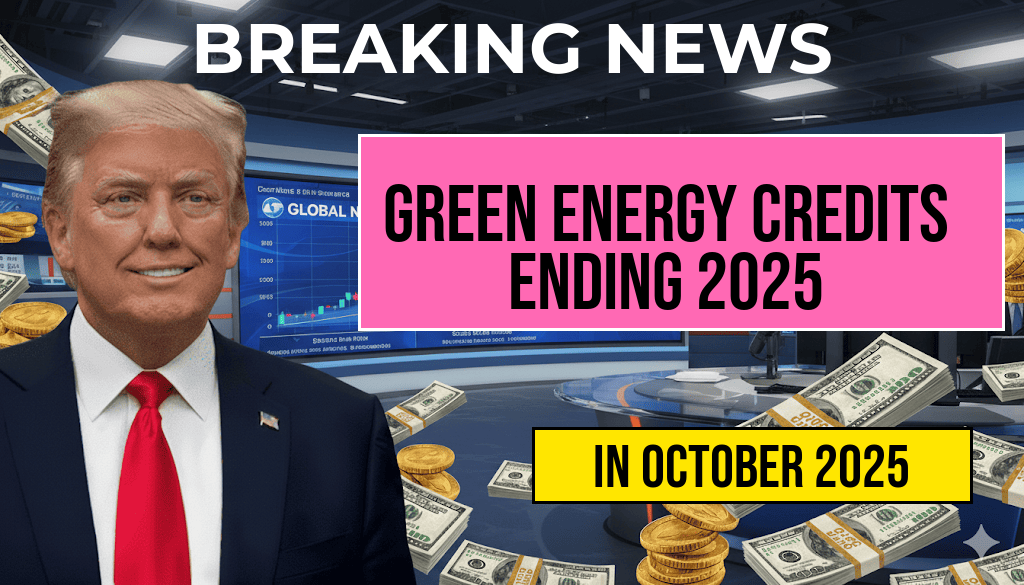Homeowners who have invested in renewable energy systems through federal tax incentives should prepare for a significant change as many of these green energy credits are set to expire at the end of 2024. With the expiration date approaching in 2025, property owners who plan to install solar panels, wind turbines, or other renewable technologies need to understand how this shift could impact their financial benefits. The current landscape presents both a window of opportunity to maximize incentives before they phase out and a need to reassess long-term investment strategies. This article explores what homeowners should consider, the specific credits affected, and potential alternatives to sustain sustainable upgrades beyond 2024.
Overview of Residential Green Energy Tax Incentives
The federal government has historically incentivized renewable energy adoption through tax credits, primarily aiming to reduce the upfront costs of installing solar, wind, and other renewable energy systems. The most prominent among these is the Investment Tax Credit (ITC), which has significantly driven growth in residential solar installations over the past decade. Additionally, some states and localities offer supplementary incentives, but the federal ITC remains a critical component for many homeowners.
The Investment Tax Credit (ITC): A Closer Look
| Year | Percentage of Credit | Notes |
|---|---|---|
| 2015-2019 | 30% | Maximum credit available for eligible systems |
| 2020-2022 | 26% | Gradual reduction begins |
| 2023-2024 | 26% | Stable credit period |
| 2025 and beyond | Potential expiration or significant reduction | Congress has debated extending credits; no definitive extension confirmed |
What Homeowners Need to Know About the 2025 Expiration
The federal ITC is scheduled for a phasedown, with the current 26% rate for 2023 and 2024 expected to drop to zero unless Congress enacts new legislation. This means that homeowners installing solar or other renewable systems in 2025 may no longer qualify for the existing federal tax credits, potentially increasing the overall cost of such projects. Experts advise that homeowners aiming for maximum financial benefits should consider completing installations before the end of 2024.
Impact on Homeowners Considering Renewable Upgrades
- Cost implications: The absence of federal credits could translate into thousands of dollars in additional expenses, making some projects less financially attractive.
- Timing considerations: Installations scheduled for early 2025 might still benefit from the current credits if legislation is extended, but uncertainty remains.
- Long-term benefits: Even without tax incentives, renewable energy systems can still provide savings on energy bills and increase property value, but the economics are less favorable.
Legislative Developments and Uncertainty
Congress has periodically extended or modified renewable energy incentives, but no definitive action has been taken for the 2025 expiration. Some lawmakers advocate for extending or expanding incentives to meet climate goals, while others prioritize budget constraints. Homeowners and industry stakeholders closely monitor legislative proposals, as any extension or new incentives could alter the financial calculus for renewable projects.
Alternatives and Future Incentive Options
State and Local Incentives
Many states offer their own tax credits, rebates, or performance-based incentives that can partially offset the loss of federal benefits. Examples include California’s Self-Generation Incentive Program (SGIP) and New York’s NY-Sun. Homeowners should consult local energy offices or utility providers to identify available programs.
Financing Options and Renewable Energy Trends
With federal incentives potentially ending, financing mechanisms like low-interest loans, power purchase agreements (PPAs), and leasing arrangements are gaining popularity. These options allow homeowners to adopt renewable systems with reduced upfront costs, sharing benefits with third-party providers or spreading payments over time.
Emerging Policies and Industry Outlook
Industry analysts suggest that the push toward sustainable energy will likely lead to new policies, possibly including performance-based incentives or tax credits targeted at specific technologies or underserved communities. Staying informed about policy developments is crucial for homeowners planning future upgrades.
Key Takeaways for Homeowners
While the impending expiration of green energy credits in 2025 presents challenges, it also underscores the importance of strategic planning. Homeowners interested in maximizing financial benefits should consider scheduling installations before the end of 2024. Engaging with local incentive programs, exploring alternative financing, and staying informed about legislative updates can help mitigate the impact of the credits’ phaseout.
For more information on renewable energy incentives and how they may affect your property investments, resources like Wikipedia’s entry on the Investment Tax Credit or the U.S. Department of Energy’s solar resources provide valuable insights.
Frequently Asked Questions
What are Green Energy Credits and how do they benefit homeowners?
Green Energy Credits are incentives provided to homeowners who install renewable energy systems, such as solar panels or wind turbines. These credits can significantly reduce the overall cost of installation by offering tax incentives or rebates, making renewable energy more affordable.
When do the Residential Tax Incentives for Green Energy Credits expire?
The current Residential Tax Incentives for Green Energy Credits are set to expire in 2025. Homeowners planning to take advantage of these incentives should act before this deadline to maximize their benefits.
What should homeowners do before Green Energy Credits expire in 2025?
Homeowners should evaluate their renewable energy projects and consider installing eligible systems before 2025. Consulting with a professional can ensure they meet all requirements to qualify for the tax incentives before the expiration date.
How will the expiration of Green Energy Credits impact future renewable energy installations?
After the 2025 expiration, the availability of tax incentives for renewable energy installations may decrease or change, potentially making projects more costly. Homeowners might need to rely on other incentives or financing options to fund future installations.
Are there any alternative incentives or programs available after 2025?
Yes, various state and local programs, as well as emerging federal initiatives, may offer alternative incentives for green energy projects beyond 2025. Homeowners should stay informed about current programs and consult with energy professionals to explore all available options.

Leave a Reply